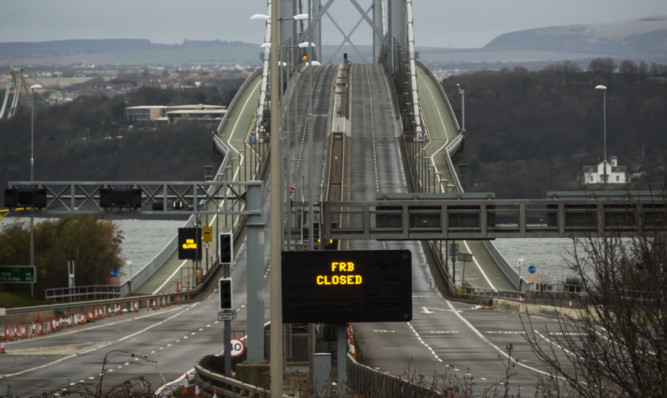Let the train take the strain is the refrain that’s quickly become a pain for Scottish drivers once again.
The closure of the Forth Road Bridge (FRB) this week has quickly gone from a minor inconvenience to road users to a critical issue of national economic importance.
You just have to look at some of the traffic data for this ageing iconic span to get a sense of how crucial it is to Scottish output.
Around 25 million vehicles use the bridge each year, that equates to an incredible 70,000-odd cars, lorries and buses each and every day.
That’s tens of thousands of people going about their daily lives and business, creating both wealth and opportunity for communities not only in the immediate environs of the bridge but across Edinburgh, the wider Fife region, Tayside and beyond.
Cut off that artery, as happened this week when inspectors found a crack in a steel bridge support and were forced to close the bridge to all traffic, and you soon have a crisis on your hands.
Suddenly you have thousands of people desperately trying to find an alternative means of getting to work.
You have businesses whose logistical planning is thrown into disarray.
That’s firms left facing higher fuel bills, difficulties in fulfilling orders and problems accessing the materials they need to do their jobs.
And you have one of Scotland’s largest local authorities left economically isolated from the capital it feeds from just a few short miles away.
That is not a good scenario by anyone’s standards but most rational people can thole disruption as long as it is temporary.
But the signs are we are in for a longer haul than anyone first imagined.
Engineers are working on a fix for the problem but that won’t be ready until next week.
Add in the difficulties in accessing the remote repair site, the worsening weather and post-fix testing and you’re speaking about a significant period before the FRB is back on track.
The Scottish Government is ultimately in control here and has done a good job in keeping people informed of developments.
Without swift action to create priority routes for buses and add in more trains for commuters, things could have been much worse and millions more cash is already being lost every minute the bridge remains shut could have been lost to the economy.
Ultimately, if the rumours are true the Government failed to act when this issue first raised its head a few years ago, then the flak that comes their way will be very well deserved.
But the important thing for now is getting the FRB open again, not carping about things that may or may not have happened in years gone by.
When the bridge was first conceived consulting engineers Freeman Fox & Partners and Mott, Hay and Anderson could never have envisaged the kind of traffic volume, nor the strain that would ultimately be placed on their structure.
Indeed it is testament to the skill of the designers, and the thousands of engineers and highly skilled technicians that have followed in their wake, that FRB has stood up to the rigours of supporting such huge loads over a sustained period with so few issues.
What the last few days have proved is the bridge, like many of the best things in life, is something you only truly appreciate when it is no longer there.
It may be getting longer in the tooth and soon to be usurped by a young pretender, but the FRB is the infrastructure backbone of east central Scotland
The sooner it is back in service the better for us all.
